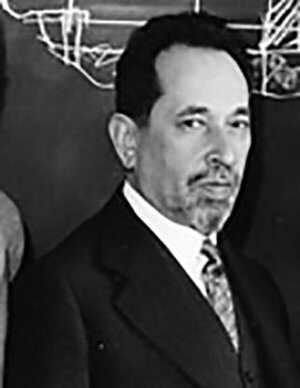Name Leon Moisseiff Role Engineer | ||
 | ||
Died September 3, 1943, Belmar, New Jersey, United States Structures Manhattan Bridge, Tacoma Narrows Bridge, Benjamin Franklin Bridge Similar People Charles Alton Ellis, Irving Morrow, Joseph Strauss, Clark Eldridge, Ralph Modjeski | ||
Tacoma Narrows Bridge Disaster
Leon S. Moisseiff (November 10, 1872 – September 3, 1943) was a leading suspension bridge engineer in the United States of America in the 1920s and 1930s. He was awarded The Franklin Institute's Louis E. Levy Medal in 1933.
Contents
Biography
Born in Riga, Latvia into a Jewish family, Moiseiff started his education there and studied at the Baltic Polytechnic Institute for three years; he emigrated to the United States with his family at the age of 19 because of political activities. In the US, he graduated from Columbia University with a degree in civil engineering in 1895.
He began his career in New York, and gained a national reputation as one of the designers of the Manhattan Bridge over the East River. He also assisted chief engineer Ralph Modjeski in designing the Benjamin Franklin Bridge across the Delaware River.
He was an early advocate of all-steel bridges, which began to replace concrete and stone structures in the 1920s. He became known for his work on "deflection theory," which held that the longer bridges were, the more flexible they could be. Charles Alton Ellis elaborated on Moiseiff's theories, and applied them in the design of the famed Golden Gate Bridge. Moisseiff served as a consulting engineer on the bridge, but declined to speak up for his colleague Charles Ellis when he was fired from the project.
Moisseiff called the original Tacoma Narrows Bridge, the first bridge that he designed as the leading engineer, the "most beautiful bridge in the world." However, he lost his strong reputation when this narrow span across the Puget Sound in Washington State collapsed in a windstorm four months after it opened in 1940. The motion of the bridge earned it the name Galloping Gertie. The dramatic film of the bridge's collapse, as a twisting motion added to the stress of longitudinal waves along the span, is still shown to engineering, architecture, and physics students as a good example of torsional flutter gone awry.
Moisseiff died of a heart attack in 1943. Though he had designed many other famous spans, the Narrows collapse overshadowed them all. It became a symbol of failed engineering and the dangers of arrogance in design. As tragic as this disastrous design flaw became to Moisseiff personally, it motivated the engineers to further research and substantially improve the design and safety of suspension bridges.
